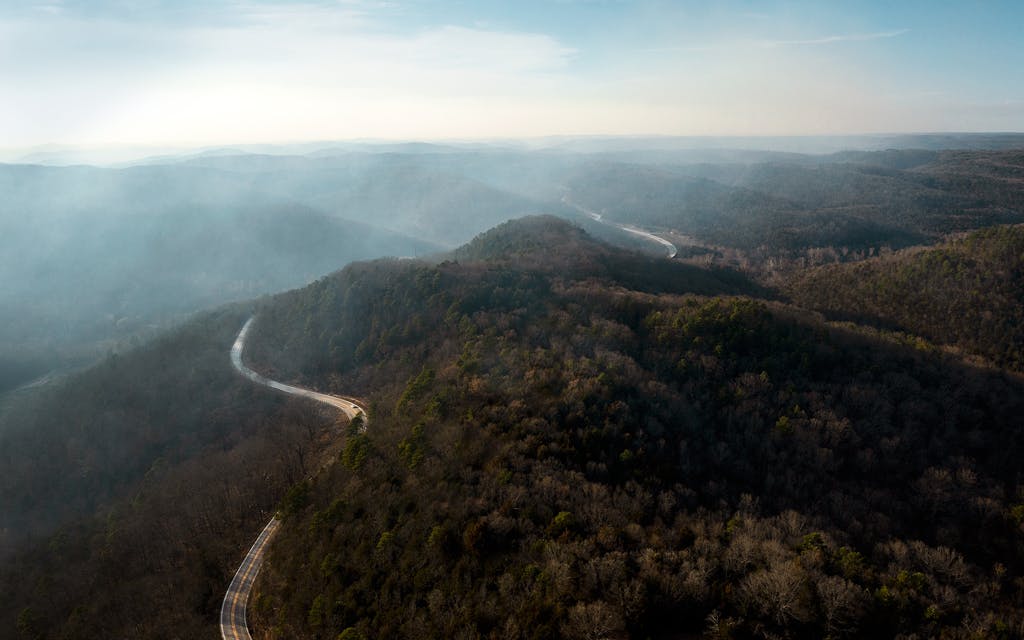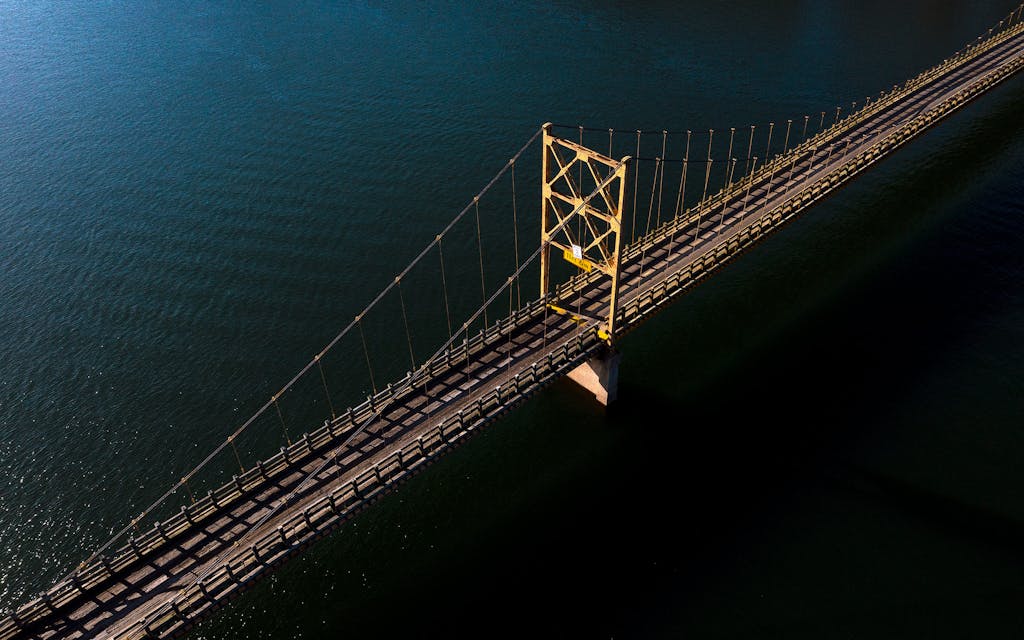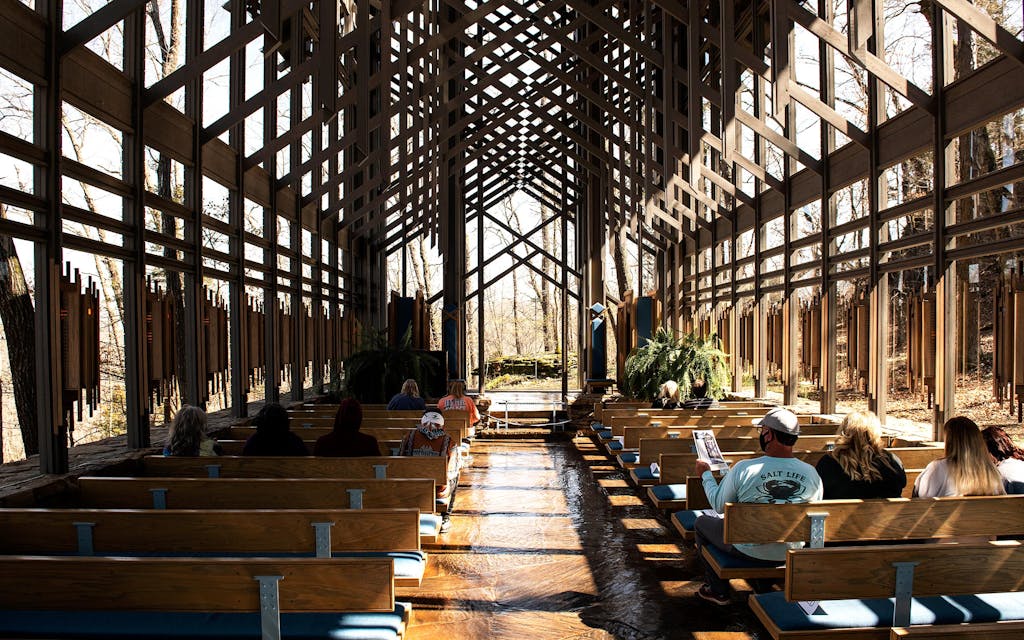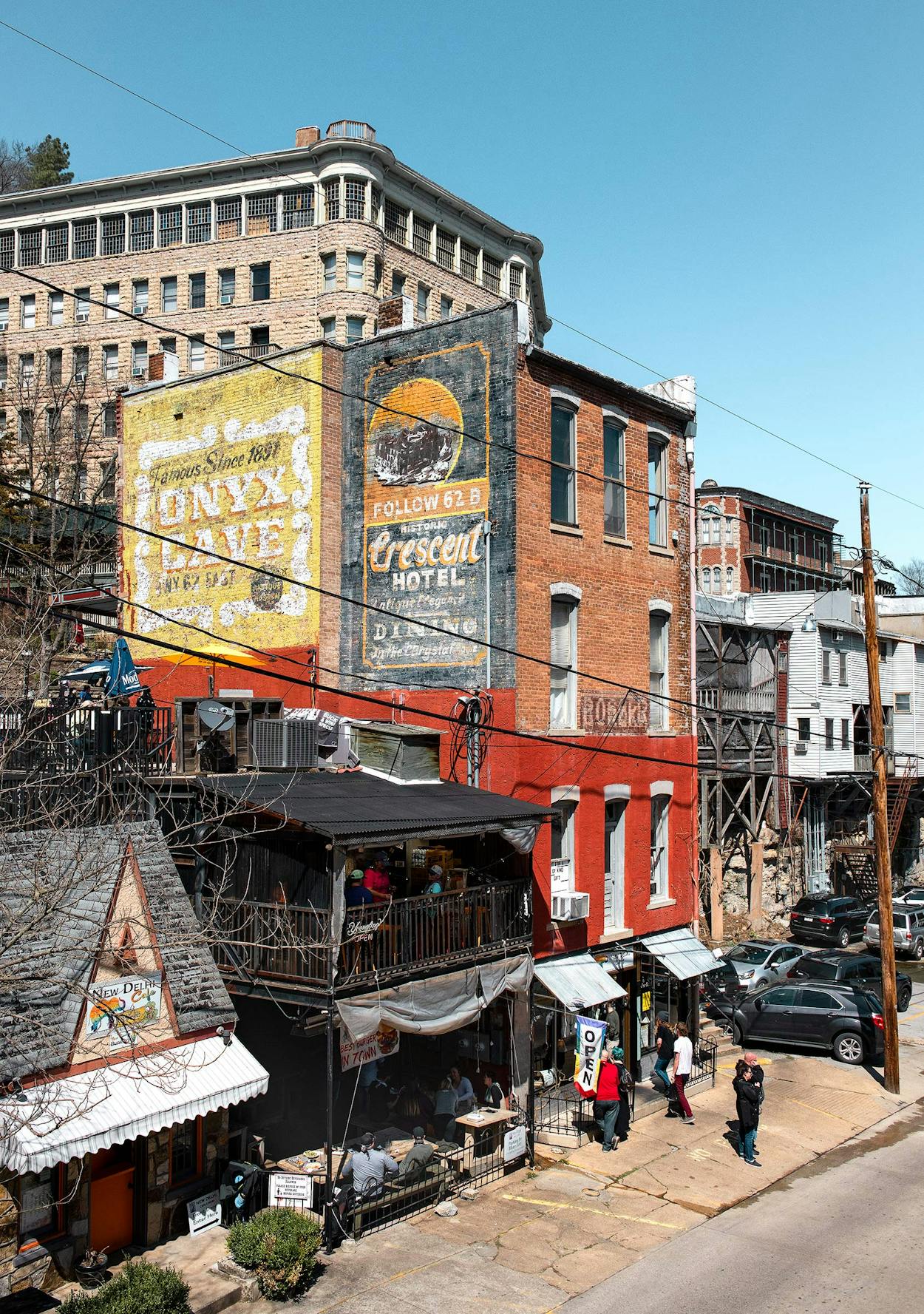About an hour outside Dallas, the signals of the city’s familiar radio stations start to fade. Instead of opening a music app on my phone, I hit the Seek button and catch snatches of local news reports, bluegrass, and songs I can’t place. This is my favorite part of traveling by car. I love listening in on the soundtrack that plays for people in a town that isn’t mine. And after the past year, it’s a much-needed break from the routine.
I feel the tension melt from my shoulders now that we’re on the road. In mid-February 2020, just before the start of the pandemic, the Navy moved my husband and me and our two toddlers to Dallas after two years in Japan. Like so many others, we spent the next year becoming intimately familiar with the layout of our house instead of exploring new places. We worried about the health of our parents, wondered how to navigate this economy, and learned how to become a family again after two years of back-to-back deployments. I traveled virtually on Google Maps by dropping a pin on global destinations I dreamed of visiting. Finally, exactly a year after we moved back to Texas, we felt comfortable enough to pursue a real, nonvirtual getaway.
We almost didn’t make it, though. My family had spent the week bundled up in our home during the historic winter blackout. We were lucky to have enough electricity every day to eat hot meals before the house went dark again. Each morning, I woke to boil-water notices creeping closer to our neighborhood. I wondered if we were next. So, with the roads drivable again, we stuck with our original travel plans, and two days after one famous politician got caught escaping Texas during the crisis, I too am cruising out of the state with my spouse and kids. As we head southeast of town, the yellow line that normally marks the side of Highway 75 is replaced with white slush. Even the Red River has changed its colors. The sun hits the water just right, and I see it’s encrusted with ice and snow. The opening notes of a Robert Earl Keen classic float into our SUV as we cut through Oklahoma on our way to northwest Arkansas. I haven’t given the song a thought in years, but the lyrics roll off my tongue: “They jumped into his pickup, Sonny jammed her down in gear / Sonny looked at Sherry, said, ‘Let’s get on outta here.’ ”
For my family, Arkansas has been a location for refueling in only the literal sense: a quick stop on the way to somewhere else. When I moved from Texas to the East Coast in the summer of 2013, a mechanic in Texarkana put Freon in my car while I ate lunch next door. Fort Smith, which abuts the Oklahoma state line, was a frequent pit stop for my husband, Patrick, when he was flying an F/A-18 from Naval Air Station Oceana, in Virginia Beach, to another base on the West Coast. Today, Arkansas is our destination, not just a pass-through. The goal is the same, though. We want to recharge.

For my children’s first U.S. road trip, I’ve planned a visit to Eureka Springs, in the Ozark Mountains, about a six-hour drive from Dallas. Online photos of the historic downtown’s winding streets and Victorian homes drew me in, and the abundant outdoor activities, from hiking to kayaking, sealed the deal. After we slice through the southeast corner of Oklahoma on Highway 75, we turn east on Interstate 40 and enter the Natural State. We leave behind the flat plains and are treated to a windshield view of rolling hills and mountains. Several inches of snow cover the ground, but unlike at home, it feels as if it belongs here—the landscape seems to be created for all four seasons. We head north for a couple of hours and turn off the beaten path. Shortleaf pines line a two-lane highway that snakes toward Eureka Springs. My ears pop as we reach a higher altitude. I can tell the swinging back and forth is getting to our two-year-old son, Andrew, so I climb over the console, brush Goldfish crumbs onto the floorboard, and squeeze between the toddler seats holding him and our three-year-old, Ellie.
In front of us, the Beaver Bridge seems to mark the entrance to our vacation. The “Little Golden Gate of the Ozarks” is one of two remaining suspension bridges in Arkansas, and the only one still open to vehicles. Like the famous structure in San Francisco, this one has two steel towers with steel cables draped over the top. But where that one is painted “international orange,” this one is actually yellow. And at six hundred feet in length, the Beaver is less than a tenth of the size of the Golden Gate. It has room for only one car at a time, so we wait our turn at a stop sign. After a vehicle passes us from the opposite direction, we cross the White River. The wood deck moans as we roll over it. Beside me, Andrew gets sick before I can fully prepare.
The cabin we had originally reserved is snowed in, so we’ve been rebooked at a condo on Holiday Island, a planned resort community a few miles north of town at the edge of Table Rock Lake. We arrive as the sun dips below the horizon. The balcony is on the west side of the building, and the curvy silhouette of part of the Ozarks rises in stark contrast to the sky. The clouds stretch like a watercolor painting, their coral hues bleeding into the last rays of yellow. Twilight sets in, and the sky deepens to crimson. “Sailor’s delight,” I think.

The sun is out as we drive into town early the next morning. We leave behind the modern aesthetics of Holiday Island, with its golf courses and marina, and slip back in time. Eureka Springs is steeped in nostalgia. Signs promising “Cupcakes and Cones” and “Funnel Cakes!” beckon us to stop. Wide porches wrap around houses and stores in a way that reminds me of the best parts of the French Quarter, in New Orleans, and Duval Street, in Key West. Like those destinations, it flaunts a touch of quirkiness as well. Mardi Gras beads hang in windows a week into Lent. Tarot readers have set up shop beside jewelry stores. A place where you can dress up for sepia-toned photos advertises the opportunity to get legally married there. “No witnesses, blood test, or waiting period needed in the great state of Arkansas,” it boasts.
Eureka Springs’ year-round population hovers at about 2,000, but the town and surrounding county attract roughly 750,000 visitors a year. The downtown is built into the cliffs of a mountainside. Buildings are made of limestone. The roads wind at odd angles, and stairs between stores and houses take you from one street level to the next. It’s in those alleys where the ghosts of the city’s past linger. Between the New Orleans Hotel and an empty storefront, faded letters on red brick read “Blocksom & Co Undertakers and Embalmers.” A finger points down the stairs. I wonder if the sign is a present-day creation for Instagram, but I later discover that the mortuary was real. Baylor University professor Jim Moshinskie, the author of a 1978 book called Early Arkansas Undertakers, says that in the mid-1880s, B. H. Blocksom operated a three-story mercantile shop in the building where he sold dry goods, clothing, and home furnishings—and when customers had postmortem needs, they just followed the hand down the stairs to the undertaking department.
My kids are more interested in Eureka’s Nut House, across the street. It looks like an old-fashioned candy shop and features rows of dozens of types of sodas in glass bottles, and shelves of chocolate-covered nuts and other sweets. We choose chocolate-caramel turtles for the kids and wasabi-flavored peanuts for us. I take a bite of the latter, and the burn goes through the roof of my mouth before it hits my nose. I’m instantly taken back to Japan, to conveyer-belt sushi, where I learned that wasabi is traditionally dolloped between the raw fish and rice ball that make up nigiri. That’s the thing I love about traveling. It compounds. Experiences in one place make you view others with a wider aperture.
I gaze in awe at the enduring beauty created at another difficult time in America.
We continue to explore the winding streets and make our way in and out of shops. Inside Nelson’s, a clothing and home store, we meet Maureen Cotter. She’s wearing a face shield and dancing to Sister Sledge’s “We Are Family,” which is playing from a speaker overhead. She lived in New Orleans until 2009. She watched her city flood during Hurricane Katrina but chose to stay. Three years later, Hurricane Gustav came barreling through. And then Ike. Cotter decided she’d had enough, so she moved north to Eureka Springs. “This town will get ya. It’s got a little flavor, but it’s very safe and kind,” Cotter tells me. “I’d never done kind and safe. I didn’t even know there was kind and safe.” I learn that she’s one of many residents who came from the Big Easy in the years after Katrina and that another wave of Louisianans fleeing storms has arrived—this time from Lake Charles, battered most recently by Hurricane Laura.
Although many of its newest residents came here in search of drier ground, the town’s four rivers and three lakes are some of its main attractions. But it was the area’s dozens of cold springs that originally put this place on the map. At the center of downtown is Basin Spring Park. According to local legend, a Sioux Indian chief’s daughter, who had lost her eyesight, was brought to a healing spring on this site. She washed her eyes, and her vision was restored. After that, word of the area’s springs began to spread and attracted white settlers. The city was founded in 1879, and its population reached 10,000 later that year. Ozarka Brand Natural Spring Water, now based in Texas, started here in 1905. The area still boasts about sixty springs, although some are just a trickle, and none are potable.
Now tourists flock to the water for a different type of cure. They slip canoes into Kings River and navigate the clear waters, which are lined with limestone bluffs. The ninety-mile river draws thrill-seekers with its rapids and lures anglers in search of acrobatic smallmouth bass. Just west of Eureka Springs, Beaver Lake is a hot spot in warmer months. Visitors can rent sailboats, try to balance on water skis, and even scuba dive to see a town that was submerged when the reservoir was created. When they’re ready to dry off, visitors explore nearby Onyx Cave, which was discovered in 1891 and maintains a temperature of 57 degrees year-round.
Pit Stop!
Known for his smoked Prime-grade briskets and pork spareribs, Jordan Wright recently opened a second location of Wright’s Barbecue that’s a five-minute drive from the popular Crystal Bridges Museum of American Art, in Bentonville. He also added patio dining to his original joint, in nearby Johnson. —Daniel Vaughn
We leave Main Street and drive toward Lake Leatherwood and its city park, which spans 1,610 acres and offers more than two dozen trails for hiking and biking. Unfortunately, we make it less than two hundred feet off Highway 62 before we realize the road hasn’t been plowed to clear the snow. We give up on the idea of nature activities for the day and decide to embrace another aspect of Eureka Springs: its thriving arts community. The creative side of the town, home to about three hundred artists, is probably best exemplified by the Thorncrown Chapel, so we set out to see it.
We drive up to an iron gate just outside town, and I’m disappointed to learn that because January and February are considered the area’s off-season, Thorncrown is closed for annual maintenance and won’t open to daily visitors till March. I approach a man standing there with his dog and find that he’s waiting for someone to erect scaffolding for repairs. He agrees to escort us down for a quick peek, so we walk about four hundred yards into the woods. It’s quiet. “It’s nowhere near photo-ready,” he warns me. I disagree.
In front of us, the chapel stands 48 feet tall. It’s sleek and looks as if it’s open to the elements. But it’s a trick of the eye. The beams are wooden, but with their gray paint, they look to me like steel. The structure is encased in 6,000 square feet of glass totaling 425 windows. Designed by E. Fay Jones, it is considered a marvel of modern architecture and has drawn seven million visitors since it opened, in 1980 (Jones also designed Thorncrown’s sister chapel, the Marty Leonard Community Chapel, in Fort Worth).

The next day, before heading back to Dallas, we visit Devil’s Den State Park, a sprawling 2,500 acres of unspoiled beauty near Fayetteville. A long, paved road winds downhill to the visitors center, in Lee Creek Valley. We pass cabins for rent and a pool for cooling off in the summer. Many structures in the park were built by the Civilian Conservation Corps, the New Deal work relief program. We stop at one of them, an overlook shelter erected in 1934 that offers a stunning view of the valley, and I gaze in awe at the enduring beauty created at another difficult time in America.
The snow has finally melted enough for us to go for a short hike, so we head to Lake Trail, which runs along Lee Creek for half a mile. I take a deep breath as we walk farther into the Ozark National Forest. It smells like pine and damp, loamy soil. It’s a scent I want to bottle up for those days I’m stuck inside, yet it can’t quite be reproduced in a three-wick candle. My husband suggests I walk around the bend to see what’s ahead.
I tread lightly on the icy rocks and round a corner that turns back into a muddy trail. The creek widens, and I hear water rushing, but I can’t see where. In front of me, it’s just a sheet of ice that doesn’t seem to move. It gets louder as I walk a couple hundred feet. Finally, I see it. As the water breaks over the dam, it creates a waterfall over rocks and comes to rest in a green pool. I watch it for several minutes and think of the stillness of the past year. We haven’t traveled. We’ve woken up and done the same thing day after day. But perhaps we’re closer to clearing that dam than we think.
Mary Beth Gahan is a Dallas-based freelance writer.
This article originally appeared in the May 2021 issue of Texas Monthly. Subscribe today.







